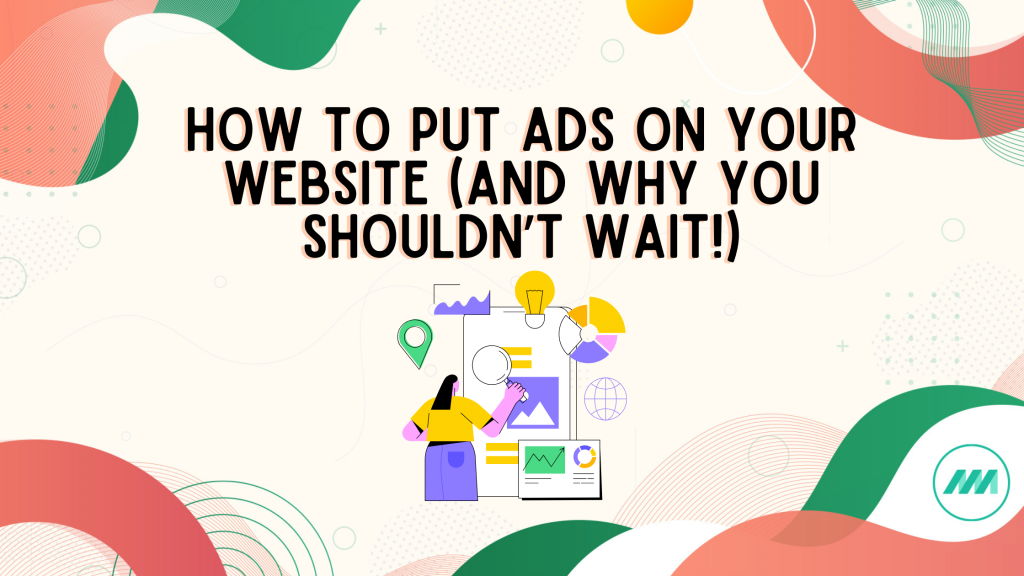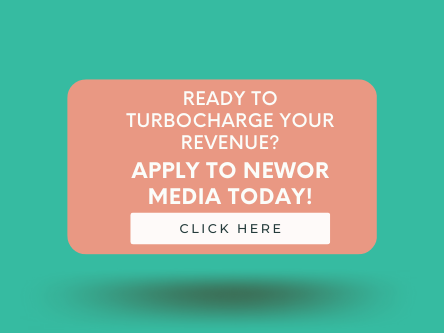
Analysts predict that advertisers will spend more than $602 billion in 2022 on digital ads. For publishers, there’s a lot of money to be made by offering ad space and ad placements. Whether you have a new website that’s gaining traction, an eCommerce storefront, or an established site, you cannot afford to miss monetization opportunities.
Publishers and advertisers have a symbiotic relationship. Advertisers want to reach their customers as effectively as possible. Publishers want to monetize their content. It makes for a great match. With the right AdTech partner, you can grow your revenue by adding a piece of code and then letting your partner handle the rest. The system can be largely automated to generate rather passively when using the right tool.
How ads get delivered to your website can be complex, but technology handles all of the back-end work for you. You just add a snippet of code, and the money will follow. To get companies to pay for your ad space, there will, however, be certain criteria your website will need to achieve for them to pick you over the competition. Alternatively, you could join an affiliate program.
Why Do People Put Ads on Their Websites?
Publishers put ads on website pages so that others can advertise their products or services and create ad revenue to help pay for their site. There are typically three ways you can monetize your website:
- Sells ads directly
- Promote affiliate products and services
- Use AdTech
Selling ads directly can generate significant revenue if you generate enough targeted traffic to make it appealing to advertisers. However, it’s also the most expensive. Selling direct is time-consuming and requires recruiting, hiring, training, and retaining a sales force.
With affiliate marketing, you can advertise products or services from other companies that pay you a fee if someone clicks on the ad on your site and then buys the product or service. Affiliate marketing pays a referral fee when someone converts. Publishers do make money from these relationships, but you can also run a lot of ads and never see a dime.
AdTech produces more passive income, allowing publishers to focus on creating great content and driving traffic rather than having to sell the ads themselves. To put ads on website pages, the code you need is easy to install on most CMS platforms, such as WordPress. You can place ads in minutes and get started with Google Ads or other platforms.
Digital advertising can fluctuate due to seasonality, website traffic, and the industry or niche that the website serves. However, whether you are selling directly, using affiliate marketing to earn money and serving relevant ads on your website, or using AdTech solutions, there is money to be made.
When Is the Best Time to Put Ads on Your Website?
Your website must meet certain traffic thresholds before you start putting ads on website pages. If website owners don’t have lots of traffic, your ads won’t perform well, which may limit your ability to generate revenue from your website traffic.
A general rule of thumb for determining the best time to put ads on your website is when you have at least 100 organic visitors daily and a significant amount of quality content. You need both to produce page views and conversions for advertisers to ensure their ads get seen and visitors act on them.
Advertisers will also favor high-quality sites that provide a great user experience. One-page sites, small content sites, and bloggers will likely not be eligible for most ad programs. Also, certain markets and niches might not be allowed to run ads.
To optimize your monetization potential, you need to pick the correct niche and build your audience first before you start to run ads. You want to establish the quality of your content, the user experience, and consistency in traffic before you put ads on website pages. Also, ensuring you are deploying best practices for on-site and off-site SEO to continue to drive organic traffic should be top of mind.
It’s important to note that some platforms have higher thresholds than others. For example, Newor Media makes it possible for website owners that aren’t big enough to use other platforms, such as Google AdSense, Ezoic, or Mediavine, to still publish ads on their website.
Advantages of Publishing Ads on Your Website
Beyond simply curating great web content, another main goal of many publishers is to earn money by publishing website ads. But there are other benefits as well. For example, putting ads on your website can help to form new relationships and build a network. It can also make your website more credible and attract other advertisers, increasing your payouts.
Once you know your audience well, you can serve more relevant ads which will perform at a higher level. This allows optimization of ad placement and revenue. As you continue to grow your website traffic, you can continue to grow your revenue.
You can also try different monetization methods to see which type of ads readers engage with. This allows you to see whether text ads, display ads, native ads, affiliate ads, or your own ads generate the best results.
Disadvantages of Publishing Ads on Your Website
Most users today understand the function of ads. Advertising helps fund websites to generate high-quality content that visitors find valuable. However, there are some disadvantages when you put ads on website pages, especially if you aren’t focusing on the user experience. For example, 88% of online shoppers say they won’t return to a site if they have a bad experience.
Using poor ad formats that annoy visitors, such as popups or overly intrusive ad sizes, can turn readers off. The wrong AdTech can potentially cause design issues depending on where advertising space is placed and how the website functions (avoid that by following our ad design placement tips!). It can also impact site load time and page speed. Even a slight delay in the time it takes a website page to load can dramatically reduce visits and increase the bounce rate.
If you’re not working with a premier AdTech partner, you could also get a stream of low-quality ads or even malware that gets deployed through your site.
Without the right type of ads and placement, users may visit your site and ignore the ads. That will hinder conversions and prevent revenue optimization.
Another disadvantage is that some publishers struggle with the process of selling ad space and don’t want to do the work to set it up. Fortunately, adding programmatic ad streams is easy even for a new website.
What Is Google AdSense and How Does It Work?
Google AdSense is one of the more popular ad platforms for publishers. It offers different types of ad formats as part of the AdSense program, such as:
- Display ads
- In-feed native ads
- In-article native ads
- Multiplex (Grid-based) ad units
- Search engine ads
Which types of ad units and the ad space you provide will impact your conversions. Google AdSense also provides revenue to publishers in different ways, including:
- PPC: Pay-per-click (PPC) ads pay publishers each time website visitors click on an ad.
- CPM: Cost per mille ads (CPM) pay based on impressions using a specific rate per thousand visitors.
AdSense ads are created by advertisers to showcase their products and services. It then tries to match these ads based on visitor behavior and existing content on websites. The amount publishers can earn will always vary based on traffic, ad bids, marketplace conditions, conversions, and more. This differs from some ad exchanges and platforms that provide a steady revenue stream.
Google AdSense is free to set up but also has some limitations. Many publishers find that AdSense has a lot of limitations and downsides as well. So, it’s not necessarily the best option for some, if not most, publishers.
For example, when you use AdSense, you’re locked into using Google and can’t use other ad networks. This can limit your ability to monetize your site. Your accounts can also be shut down at any time for a variety of reasons — many of which are outside your control. For example, if Google detects invalid traffic to your site — whether it’s intentional or unintentional — you can have your account suspended or banned. Other publishers complain that their AdSense ads aren’t showing, which results in lost opportunities.
Many publishers started with Google but find they are better pursuing Google AdSense alternatives to maximize their revenue. Newor Media is a good example. It does the same things AdSense does but provides a better user experience. For example, Newor Media:
- Works well for smaller websites.
- Offers more hands-on support.
- Generally, it functions better and causes fewer problems for publishers.
- It is easy to set up and runs automatically.
- Generates ad income that is as passive as possible.
Google AdSense is a massive platform with lots to learn before diving in. You can pick up everything you need to know about how Google AdSense works in our Ultimate Guide.
How to Put Ads on Your Website (ASAP)
While different AdTech platforms have different requirements, here’s how to get started with Google AdSense. You will first make sure you meet the criteria, including:
- Be at least 18 years old.
- Have an active Gmail account.
- The website must be live and meets all of Google’s requirements.
- Have a website that is at least three months old (i.e., no new websites).
- Content that’s been produced is up to date and relevant to the website and doesn’t contain anything against the guidelines.
While AdSense does not require a minimum threshold of organic traffic, you will not be able to earn much money without a decent amount of traffic.
You also need to set up a Google AdSense account. To do this, you will:
- Apply online and sign up to create a Google AdSense account.
- Fill out the required forms.
- Google will then need to approve and activate your account.
- Once your account has been verified, you will then be able to get ads up and running by adding the AdSense code to your site.
Google AdSense is a self-service model, so you’ll need to manage everything yourself, including getting the ad code on your site. Some CMS platforms, such as WordPress, allow the ad code to operate using plugins to simplify the process and start showing advertising space on your website shortly after it’s added.
Newor Media works differently. We provide a hands-on service to get you up and running. Our team of professionals will help you make the most of your banner ads with friendly, prompt service. We prioritize customer service and respond to most service requests within an hour.
How to Increase Your Earnings from Website Ads
The secret to increasing your earnings from website ads is the same as what it takes to grow your website: create great content that attracts an audience. When you have a steady stream of high-quality visitors to your website, ad networks can generate significant monetization options for display ads and other ad space on your site.
If you would like to see how much you can earn from ad space on your websites or apps, check out our free Earnings Calculator. Plug in a few details about your site, and you can get a quick estimate of how much money you can earn using Newor Media AdTech solutions.
If you’re considering using Google AdSense, you’ll want to review strategies for increasing AdSense earnings. But before you commit to Google, take a moment to check out Newor Media. We can offer a more personalized, team-based approach can do for you. Let us help you scale up your earning potential.

